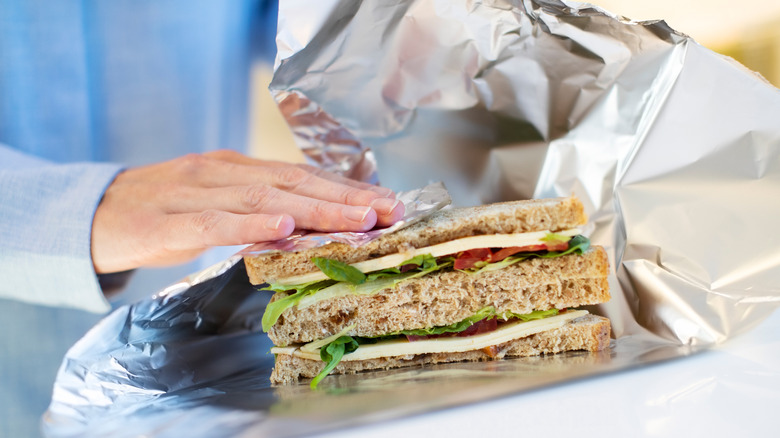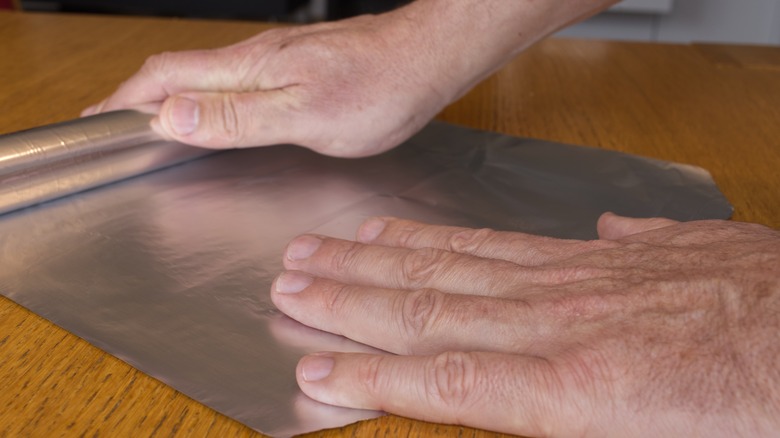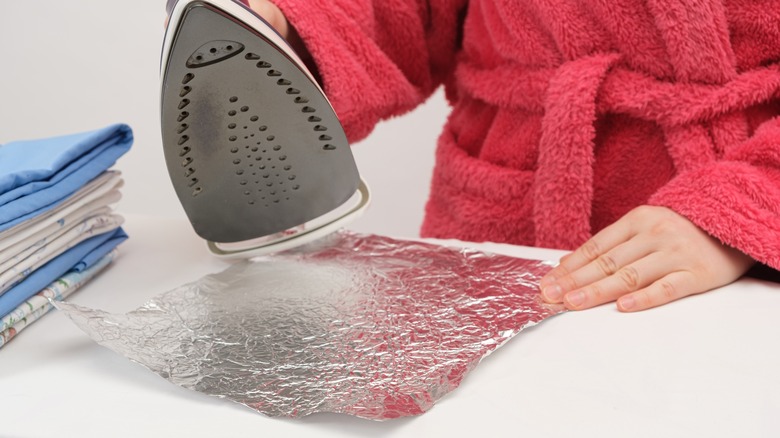Turns Out The Quality Of Your Aluminum Foil Is More Important Than You Thought
A roll of foil is often measured in width and length, but the thickness of the roll is not given numerically. Instead, the thickness is described as standard, heavy, or extra-heavy duty. While measuring foil is possible with a micrometer, using just the weight and feel of the foil roll will give you a pretty good indication of its thickness. In the kitchen, and for household chores, the thickness of the foil is important since it translates into durability.
Think beyond using it to just wrap leftover food or cover dishes, line a pan, or reheat something in the oven. There are many uses for foil throughout the house and garden, from cleaning to creating makeshift tools. But no matter what you're using foil for, it's important that the material is durable and up to the task to ensure that it doesn't shred or otherwise fall apart halfway through the job.
Heavier is better – usually
Manufacturers indicate regular foil is about .016 mm thick, while heavy-duty rolls are .024 mm thick. Regular foil works well for standard duties such as wrapping light food items like sandwiches and for covering refrigerated containers. Heavy-duty foil, which is more tear resistant, is better for cooking at higher temperatures or grilling, and also for wrapping larger items such as a roast or a turkey.
But beyond food preparation, the thicker the foil, the sturdier it is for other duties as well. There are many ideas regarding cleaning with foil. Simply crumpling foil into a ball and using it as a scrubber will remove food and stains from pots and pans, the oven, oven door, and oven racks. This technique works on grill racks as well and is superior to cleaning with a wire brush, which could lose bristles as it cleans. The more heavy-duty your ball of foil, the more durable it will be for handling tough jobs.
Useful around the house and garden
Another use for foil is to create a makeshift funnel. Simply mold the foil into a cone shape with the bottom rolled tightly enough to fit into the bottle. Similarly, you can twist foil into a shape that mimics a piping bag. While you won't have a fancy tip, it will do nicely for plating mashed potatoes or getting frosting onto cookies or cake in a steady, controlled manner. We recommend the heaviest-duty foil you can find for these tasks since having the foil fail in the middle of pouring or piping would make a real mess.
In the garden, hang strips of foil on stakes placed near vegetable or berry patches to deter birds. You can also tuck foil around the base of a plant to reflect light upwards, cooling the soil near the plant, and retaining moisture. Use foil to sharpen scissors by cutting up several sheets. You can also use foil to make ironing easier. Put foil under the ironing board cover, shiny side up. The boost in temperature makes it easier to fix stubborn creases and shorten ironing time in general. In case you have a heavy piece of furniture to move, lift and tuck several sheets of foil under the legs to help move it around on carpeting, but not on a hardwood floor, since the foil may leave scratches behind.


